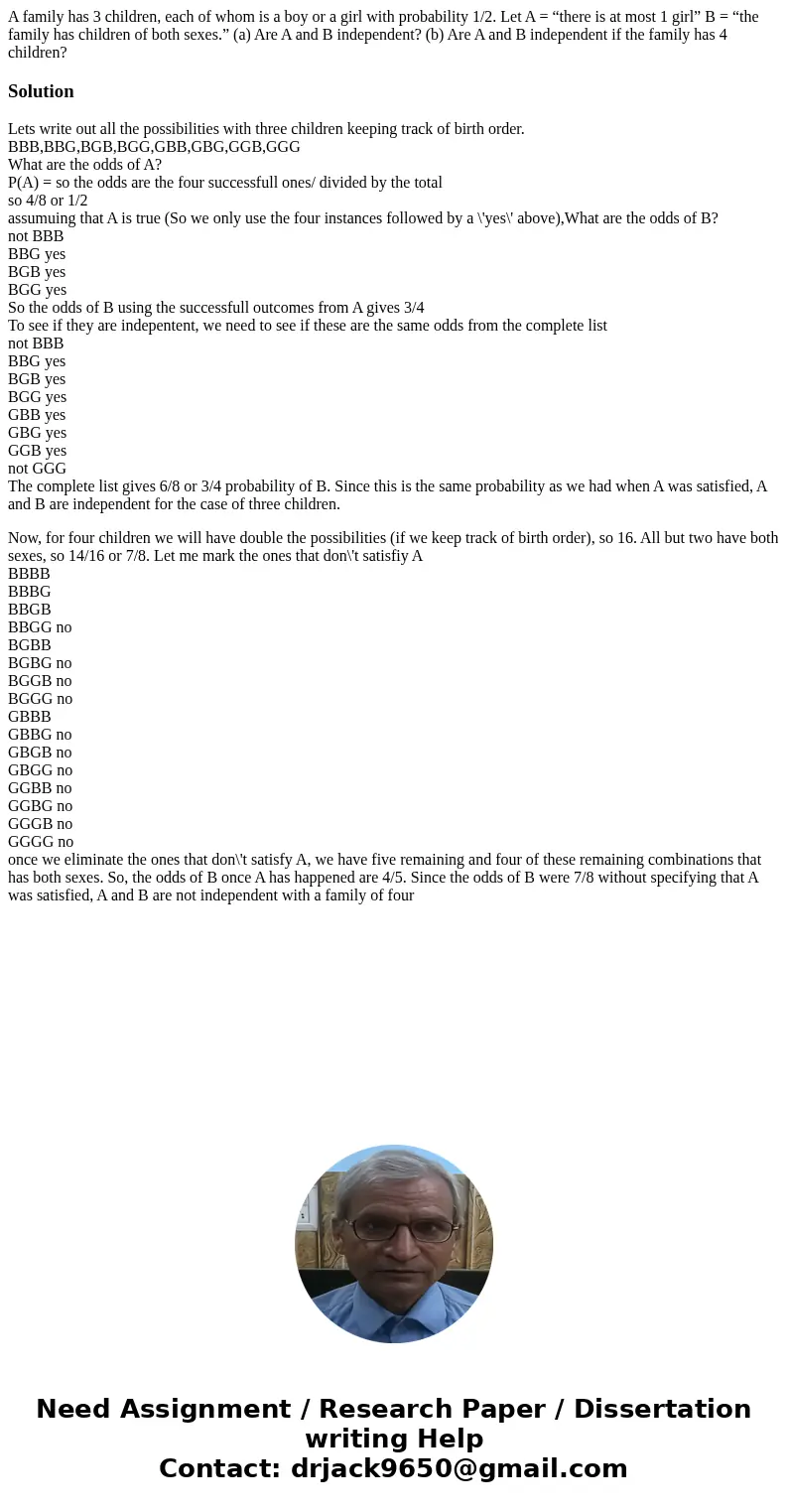A family has 3 children each of whom is a boy or a girl with
A family has 3 children, each of whom is a boy or a girl with probability 1/2. Let A = “there is at most 1 girl” B = “the family has children of both sexes.” (a) Are A and B independent? (b) Are A and B independent if the family has 4 children?
Solution
Lets write out all the possibilities with three children keeping track of birth order.
BBB,BBG,BGB,BGG,GBB,GBG,GGB,GGG
What are the odds of A?
P(A) = so the odds are the four successfull ones/ divided by the total
so 4/8 or 1/2
assumuing that A is true (So we only use the four instances followed by a \'yes\' above),What are the odds of B?
not BBB
BBG yes
BGB yes
BGG yes
So the odds of B using the successfull outcomes from A gives 3/4
To see if they are indepentent, we need to see if these are the same odds from the complete list
not BBB
BBG yes
BGB yes
BGG yes
GBB yes
GBG yes
GGB yes
not GGG
The complete list gives 6/8 or 3/4 probability of B. Since this is the same probability as we had when A was satisfied, A and B are independent for the case of three children.
Now, for four children we will have double the possibilities (if we keep track of birth order), so 16. All but two have both sexes, so 14/16 or 7/8. Let me mark the ones that don\'t satisfiy A
BBBB
BBBG
BBGB
BBGG no
BGBB
BGBG no
BGGB no
BGGG no
GBBB
GBBG no
GBGB no
GBGG no
GGBB no
GGBG no
GGGB no
GGGG no
once we eliminate the ones that don\'t satisfy A, we have five remaining and four of these remaining combinations that has both sexes. So, the odds of B once A has happened are 4/5. Since the odds of B were 7/8 without specifying that A was satisfied, A and B are not independent with a family of four

 Homework Sourse
Homework Sourse